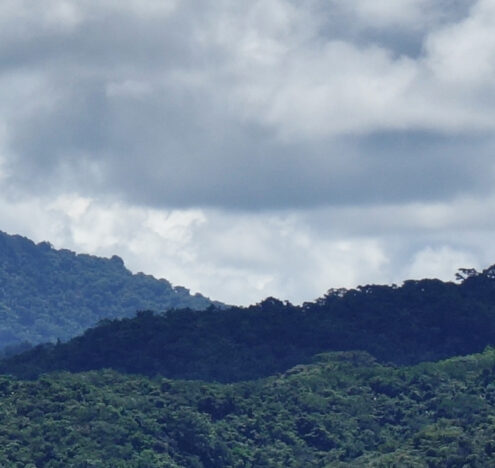Climate activists are working on translating transnational advocacy campaigns into the local context in South Asia. Currently, unconscious universalization in global discourse estranges South Asians from issues that intimately affect them.
Climate change is undeniably a global crisis — it affects all of us, but not in the same way. Research shows that the poorest countries will suffer the most consequences of climate change because of the overlay with existing vulnerabilities and the influence on farming and other climate-dependent activities. Yet, the centers of power and the biggest polluters are still in the Global North. Like the pollutants and the policy priorities, the discourse around climate change often comes to South Asian countries from the Global North, in language and stories created by and for a western audience. As a result, much of climate science and how it is communicated to laypeople gets lost in translation.
South Asia, for example, is set to be one of the region’s hardest hit by climate change, with most countries in the region already facing economic instability. Pakistan, for one, has been estimated to lose $3.8 billion annually due to climate change, according to reports by the Asian Development Bank and the World Bank. Yet, Pakistanis don’t think of climate change as their problem — and that’s an issue.
GLOBALIZING FAST FASHION
Fast fashion has been criticized for not being sustainable and contributing to climate change. Greenhouse gas emissions from the fashion industry make up 10% of global carbon emissions, and producing a single pair of jeans takes 10,000 liters of water. These stats have been splashed across global climate campaigns, including UN ones. But this is where culture comes in: if jeans are the problem, then anyone who doesn’t wear jeans isn’t contributing to the fashion industry’s environmental impact, right? Of course not. But when these simple slogans are blindly passed around, some South Asians feel climate change isn’t their problem.
And because many of the most famous global fast fashion brands like PLT or ASOS don’t have outposts in South Asia, the simplistic discourse around fast fashion in Western spheres can make people in overlooked countries like Pakistan think that they are not part of the problem or at the very least can’t be part of the solution.
While simplistic and catchy infographics and statements do well in catching our attention, they fail to capture the depth and breadth of the climate change problem in South Asia.
Lawyer and climate activist Sara Hayat argues that we need to change the conversation around sustainable fashion choices in Pakistan to help make change more actionable:
“People need to understand fast fashion isn’t just jeans and tops. Local brands like Khaadi and Beechtree count as fast fashion. When I’m asked about this I often say, ‘if you have two white kameezes (traditional Pakistani shirts) don’t buy a third one.’ Our society is very focused on appearances, and we should make recycling clothes a fashion choice — we need to make it cool.”
LOCAL SOLUTIONS
On a more macro level, sustainable fashion choices in South Asia move back to the grassroots and support local traditions and creations. Vibathi Bathiya, who is the founder of South Asians for Sustainability and has worked with local artisans in India, points out that there is a drastic need to push the industry back from making what is cheap and easy to create “support for local karigars and techniques, and art forms that need to be sustained and invested in to be kept alive.”
The systemic change that Bathiya and other advocates believe will create a more sustainable society faces multiple barriers because of the way climate discourse often comes to South Asian countries from the Global North. Much of climate science and how it is communicated to laypeople get lost in translation because of language barriers. English is often inaccessible to rural and low-income communities in South Asia. The lack of digital literacy means that climate activism campaigns are often limited to a select group of people within the region who are often relatively economically affluent. But in countries like Pakistan that rely mainly on agriculture, the rural farming populations risk being hit the hardest. Heat-related livestock diseases and weather changes impacting yields risk drastically decreasing the income of many families in the region. Hayat, whose work has included efforts to create educational videos on climate change in Urdu, points out the need to create conversations in Urdu and other regional languages to bypass these vernacular barriers.
Beyond just translating the language itself, there are certain approaches that many young activists often well meaningly import from Western discourse, only to find themselves facing severe backlash when they try to apply them locally. Whether it be the idea of not eating meat or conversations around overpopulation, which many religious groups oppose, or the idea of thrifting clothes — which most people simply don’t find acceptable — applying specific approaches without context only seeks to distance people from the cause. Dawood Qureshi, climate activist and wildlife TV researcher at the BBC Natural History Unit, advocates a more collaborative approach:
“In terms of showing people how they adopt these practices without going against their religion, we need to access the knowledge of people who know the readings and structure of the religion but who are also aware of other issues such as climate change and environmental fragility, and who are able to see the links between these subjects, and educate people using their understanding of both.”
CULTURAL CONTEXT
Activists in the region believe it is important to work within cultural and religious boundaries to make lifestyle changes appealing to a broader number of people. As international energy and climate policy specialist Maha Kamal said:
“Religion can be a very contentious subject, but we really need to make religious leaders part of this conversation. For example, Islamic ideas about valuing God’s creation and not harming nature, ecological principles from Hindu traditions on water and nature, Christian ethos of valuing creation (for example, Pope Francis’ encyclical on ecology), and many other religious traditions in South Asia that encourage sustainability, all need to be part of the greater dialogue on the environment.”
It’s also no longer enough to leave the responsibility of climate activism to a select few activists. There need to be larger-scale changes, both from a societal and leadership level. As Mehr Husain, an activist whose work focuses on sustainable practices and who co-authored the book “Pakistan: A Fashionable History” says:
“Local indigenous fabrics need to be supported via research and development in soil health, water consumption, and peasantry health. Local craft should be adopted more and encouraged. Bring these artisans to the table, engage politicians to have better practices for cotton and jute crops.”
Existing government initiatives, such as the Ten Billion Tree Tsunami in Pakistan, create room for more dialogue around an issue supported by the political leadership and help people understand the importance of taking steps toward climate action. In addition, greater collaboration between youth leaders in linking communities beyond urban centers will lead to a push to involve society as a whole in creating systemic change.
Whether it’s climate activism, gender justice, or class empowerment, the silencing of global narratives within mainstream media outlets has drowned out the needs of diverse cultures and societies. Therefore, it’s crucial to see the climate action movement not as a singular one but as multiple movements across the globe that will cater to the communities they wish to transform.
Anmol Irfan is a freelance journalist and founder of Perspective Magazine. Her work focuses on gender justice movements across the globe and looks at the intersectionality of such movements with areas like media, tech, climate, and more.






















